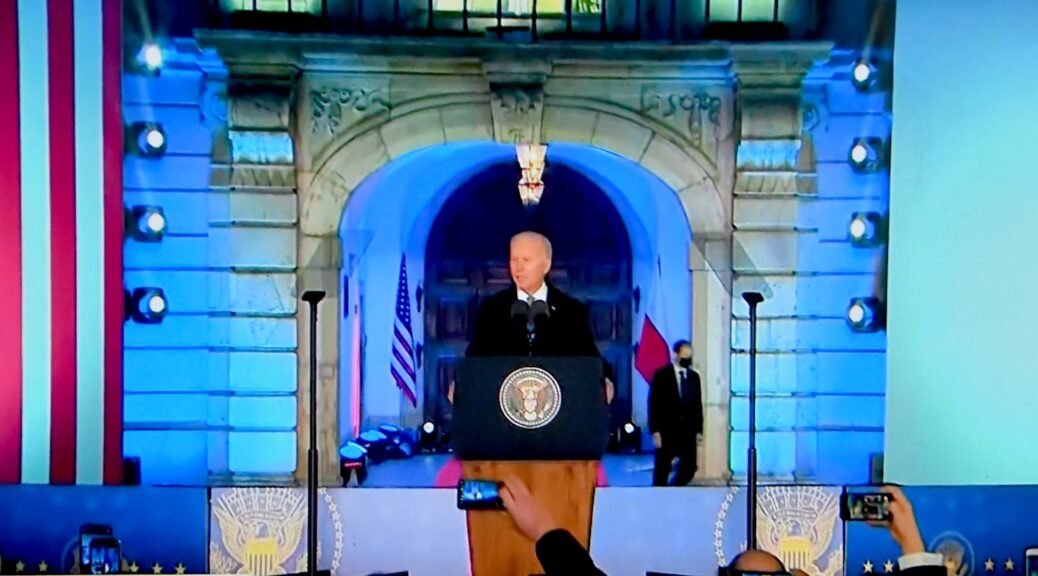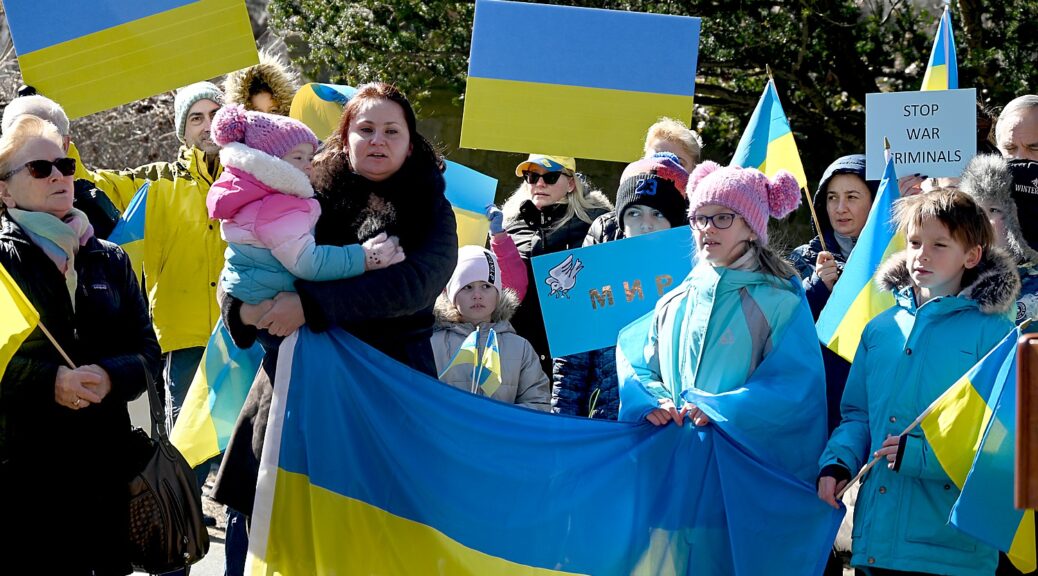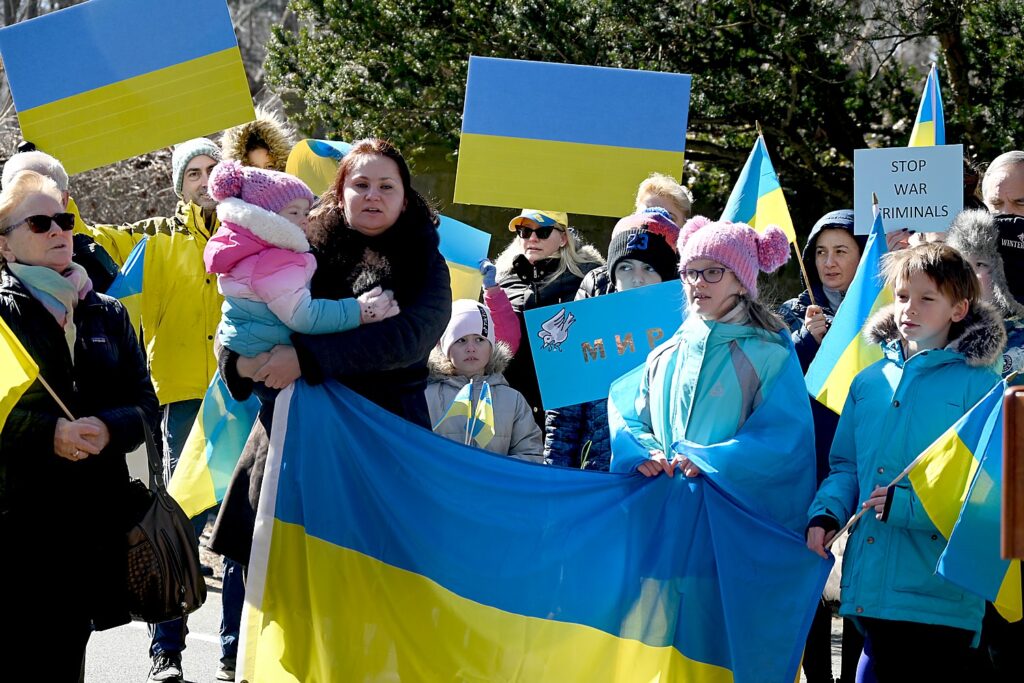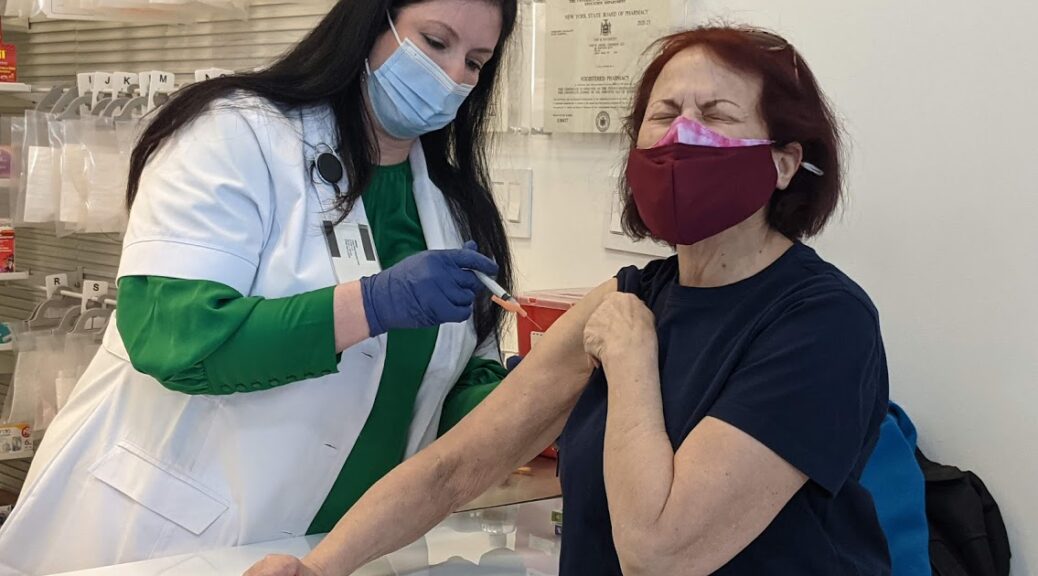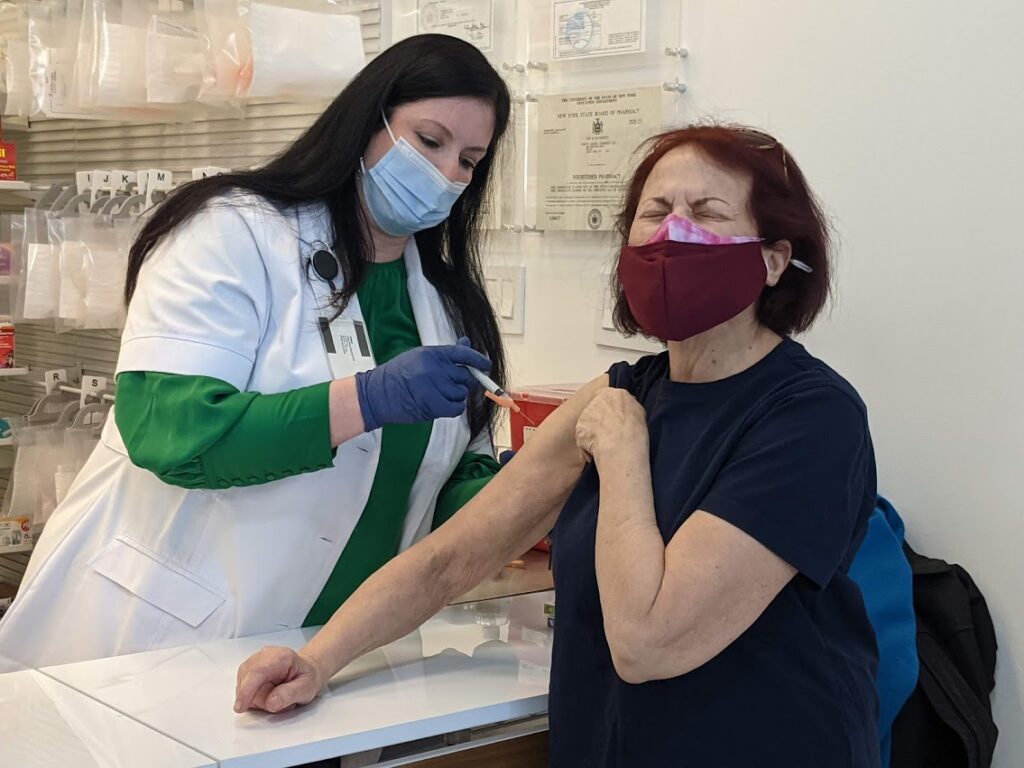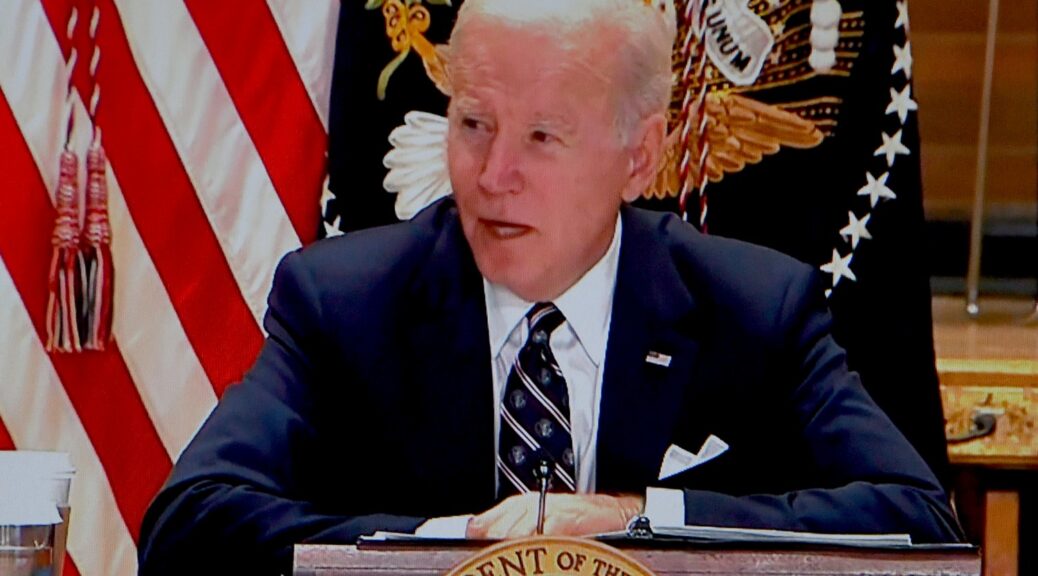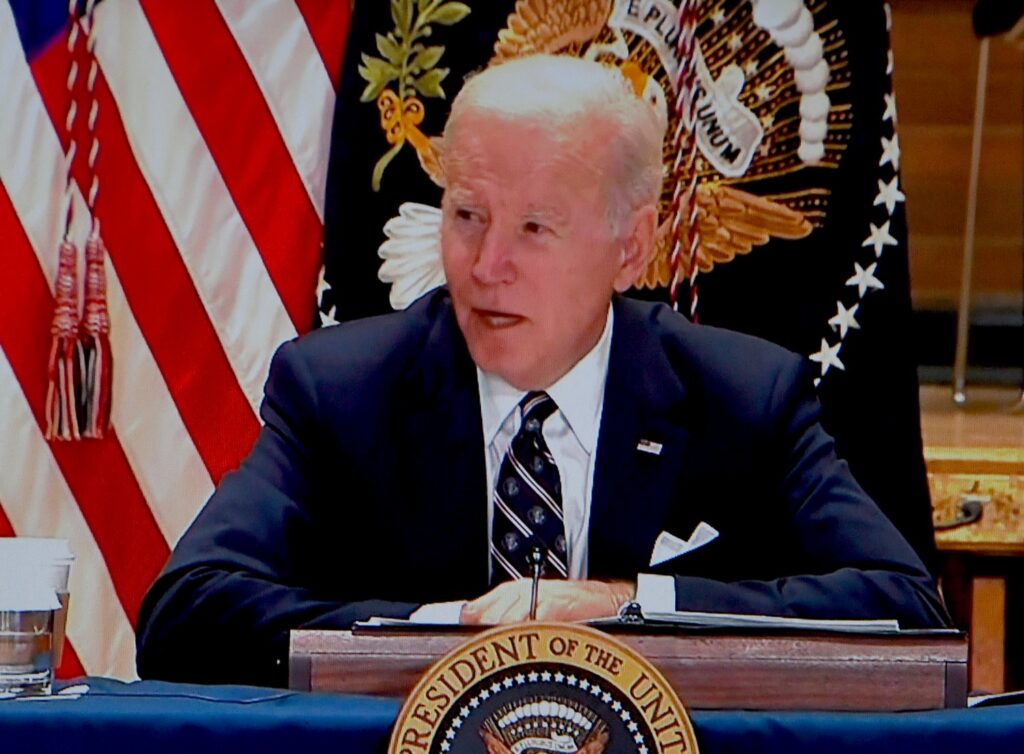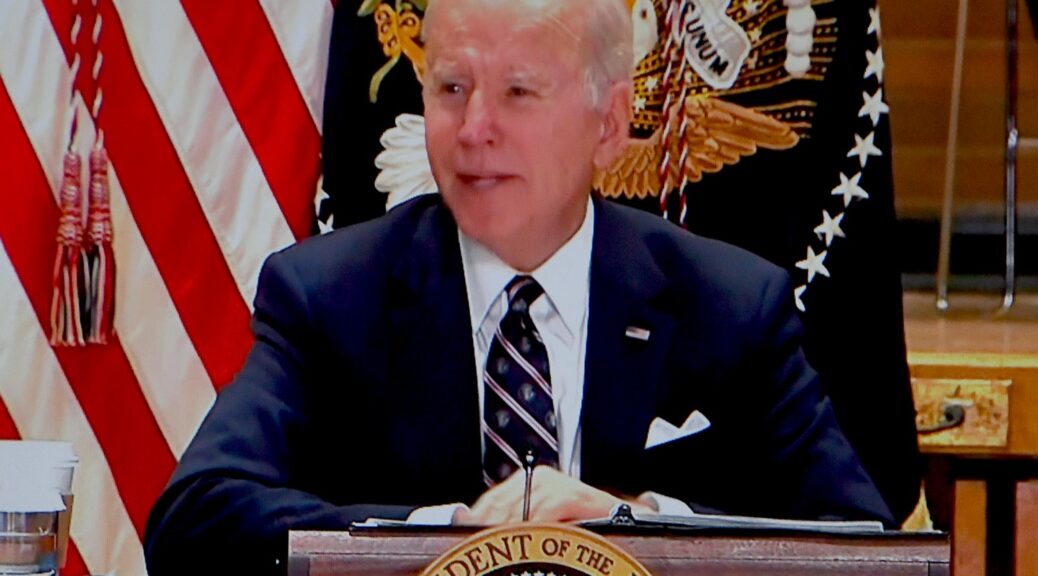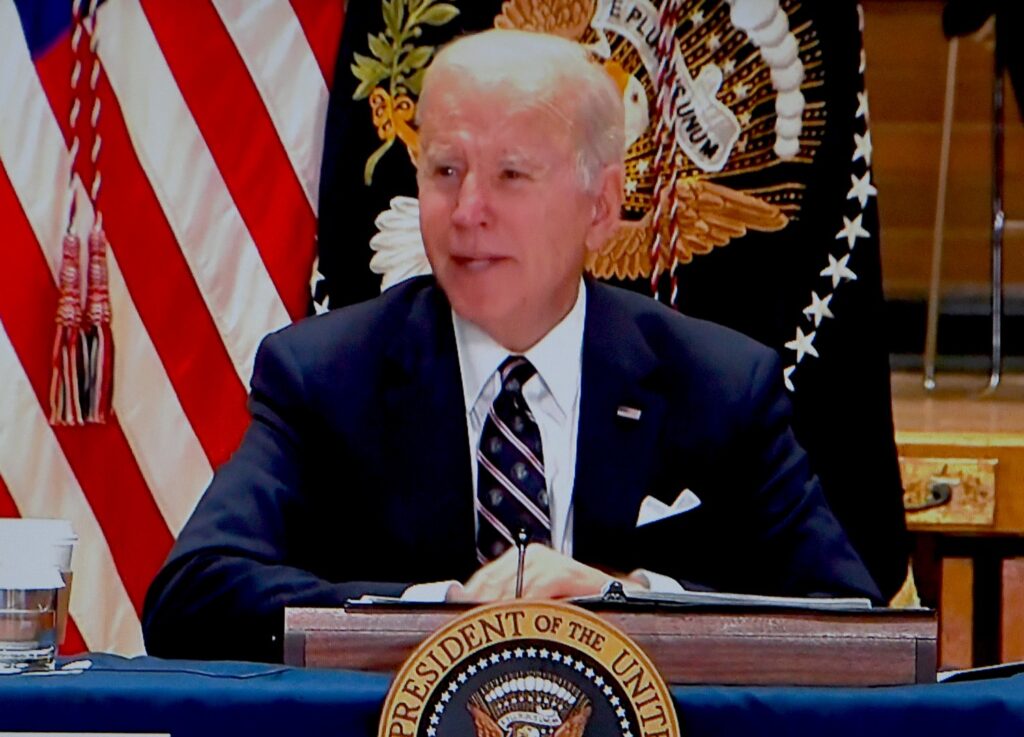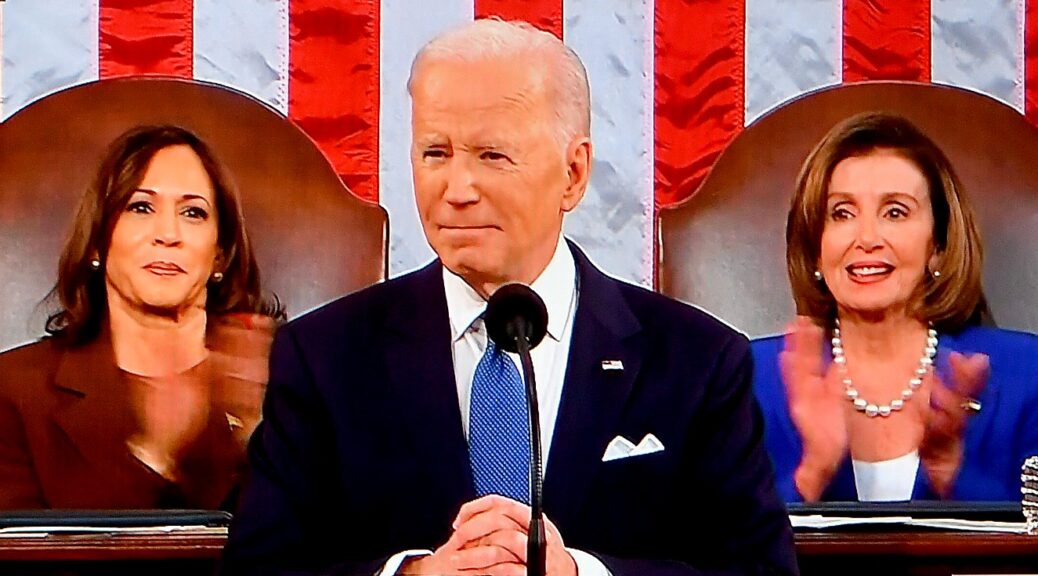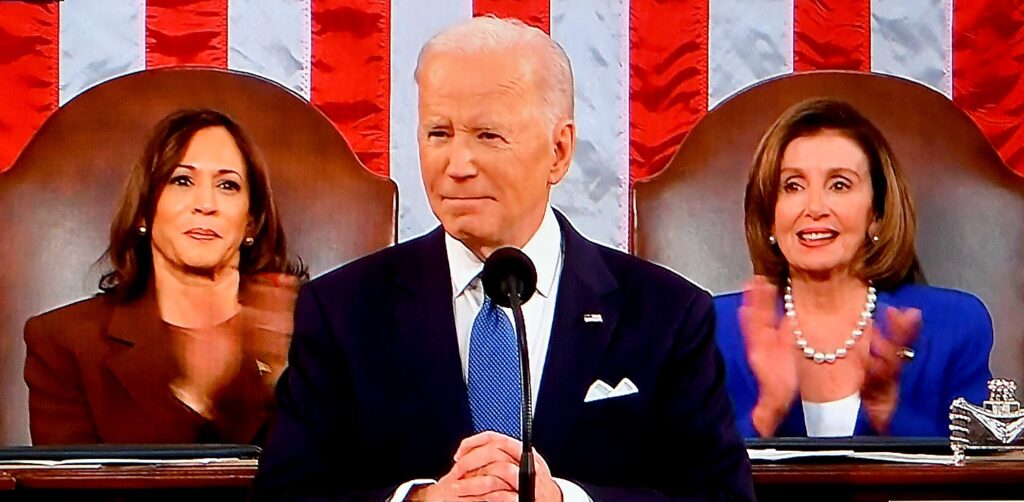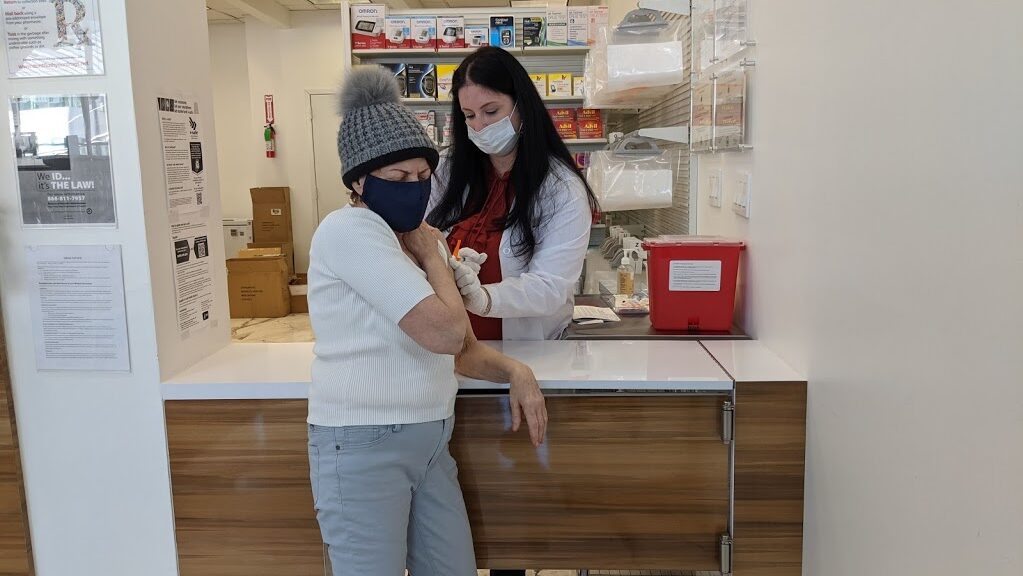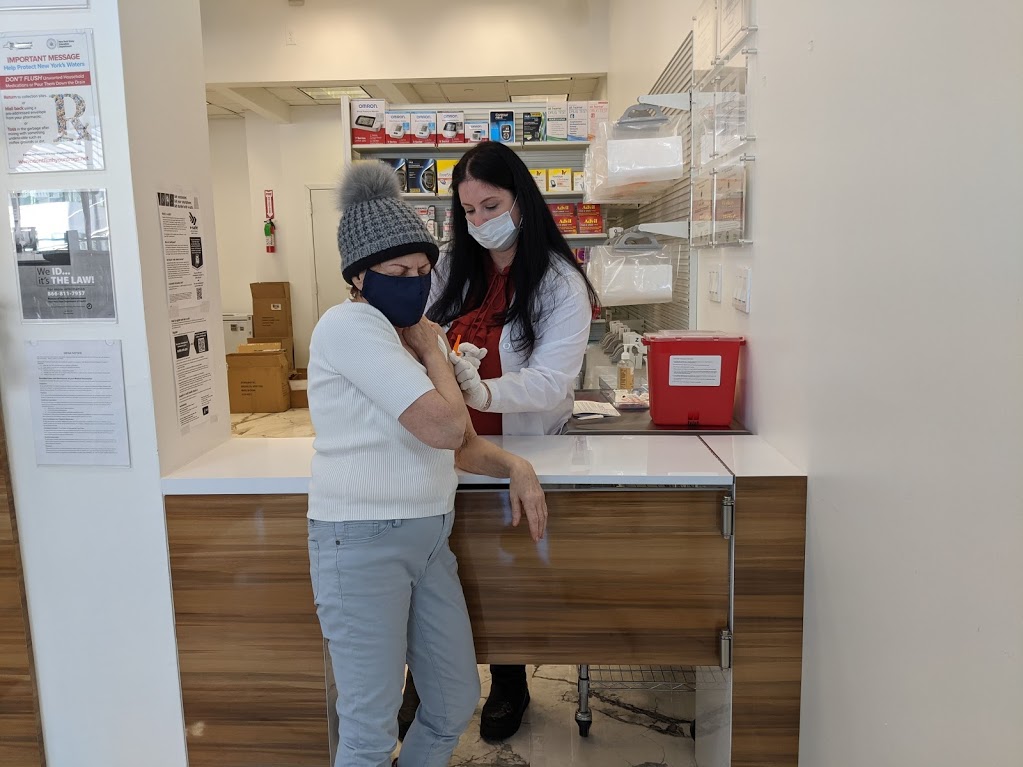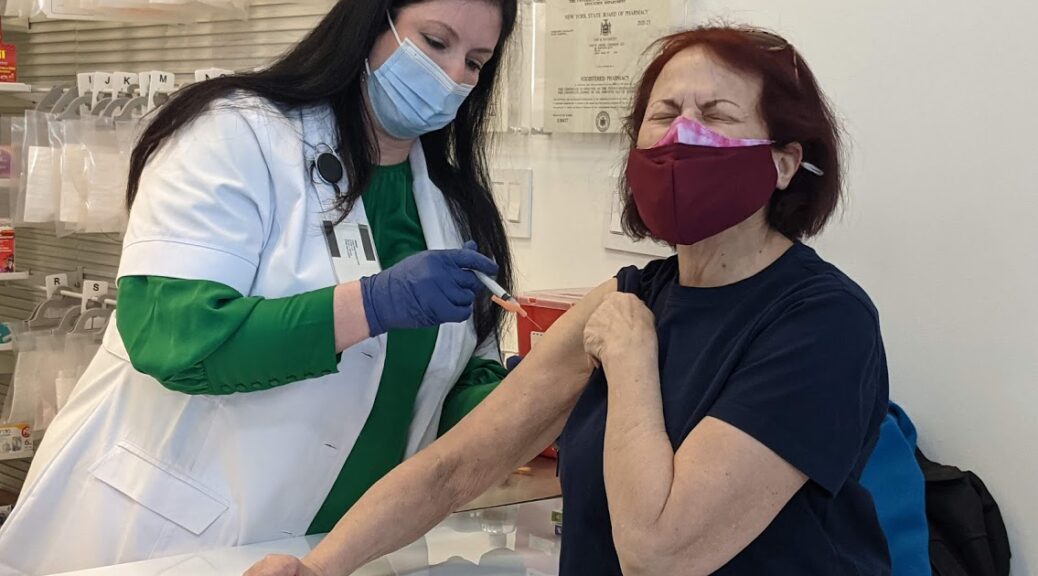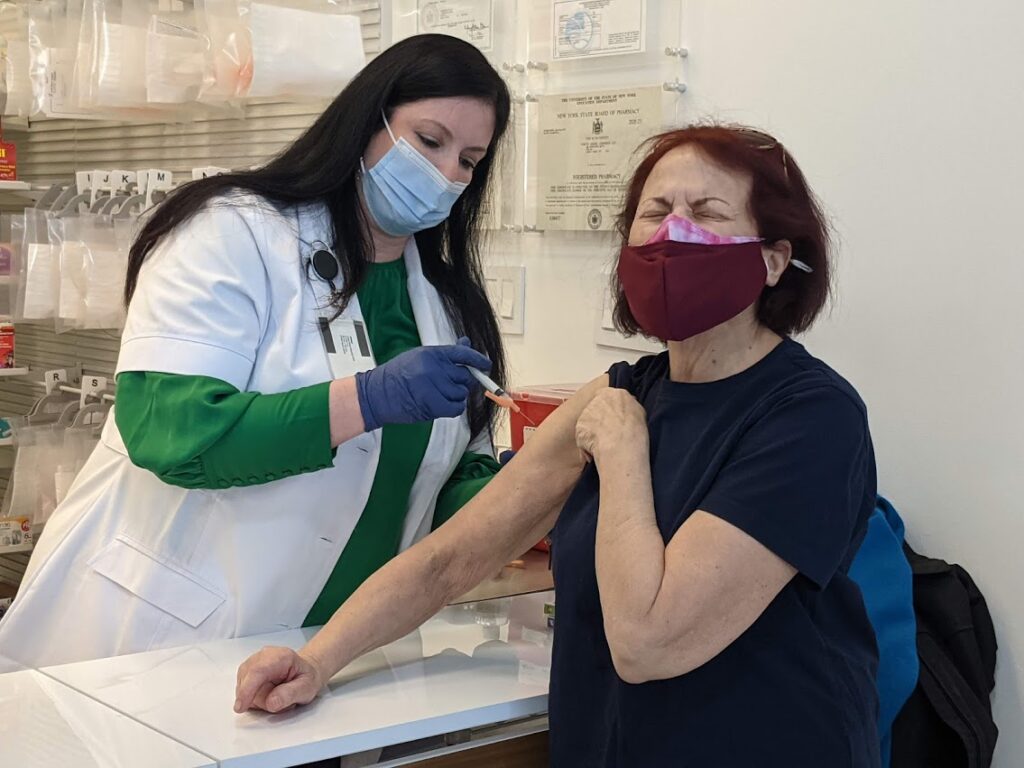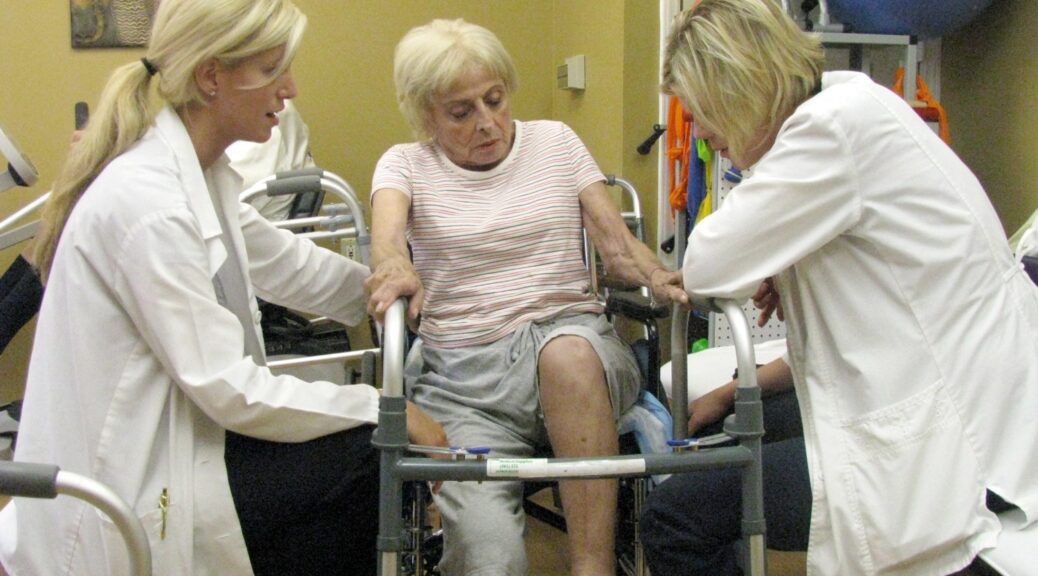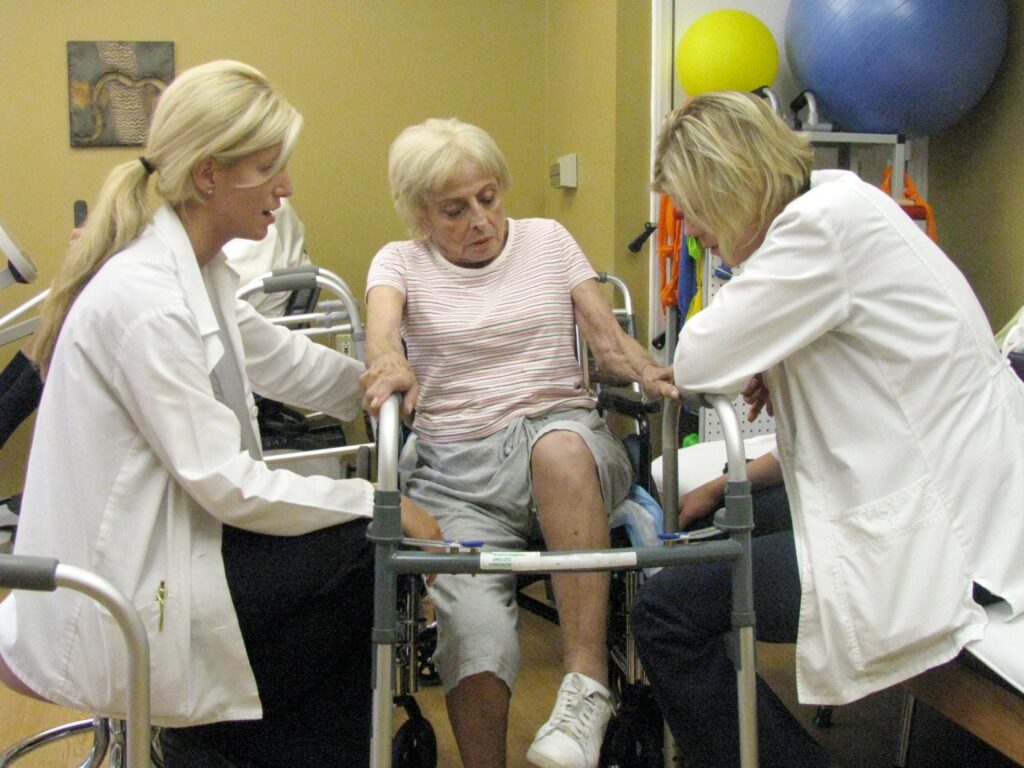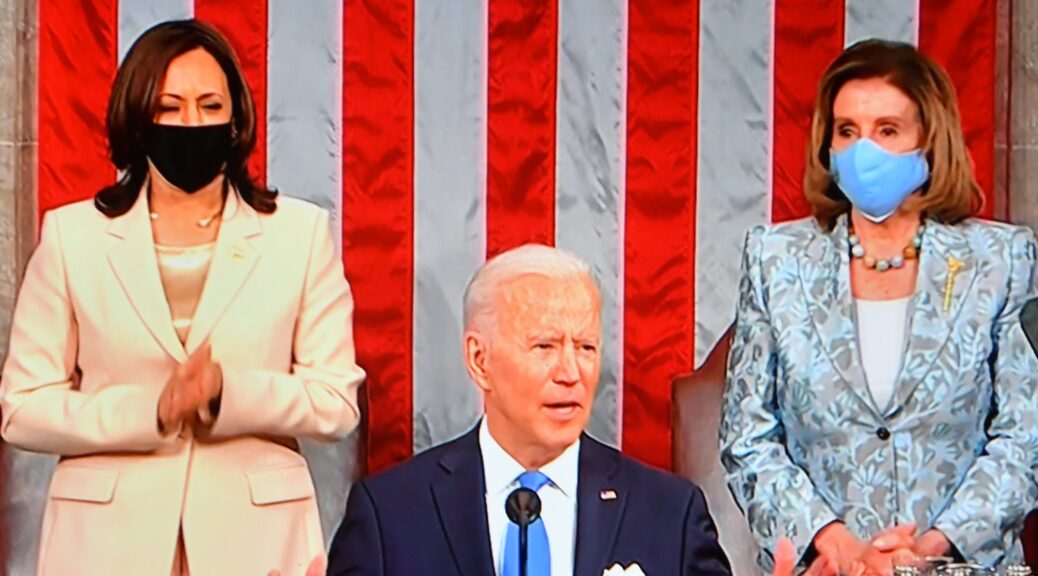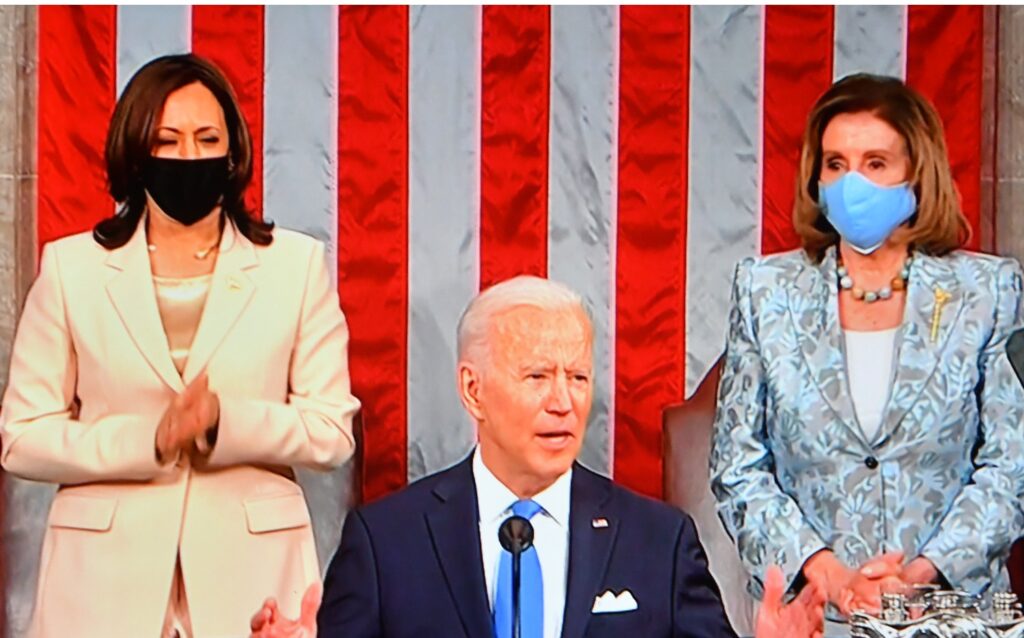In Warsaw Speech, Stands Up to Putin’s Brutality, Pledges Support to Ukraine
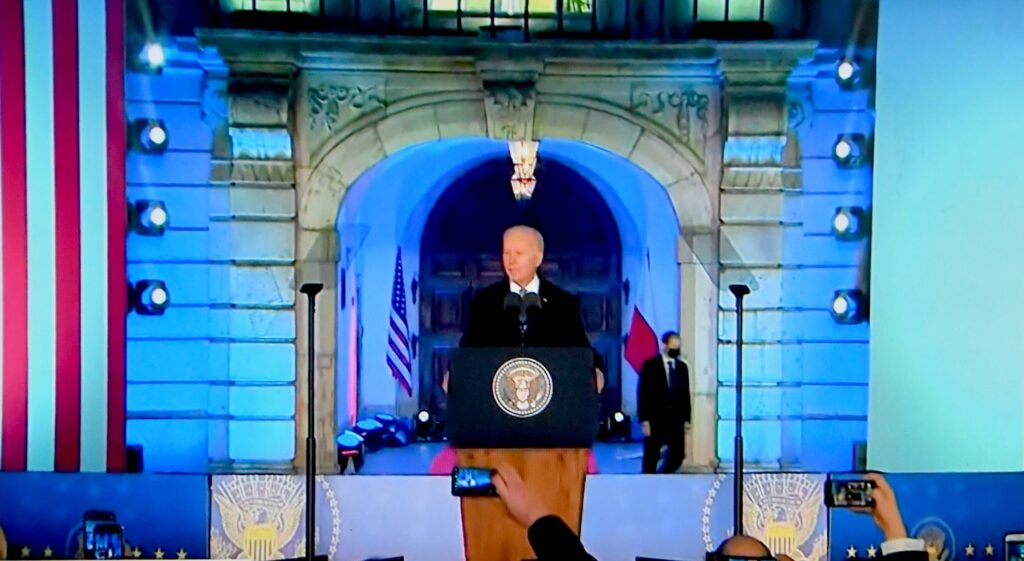
President Joe Biden, after a powerful visit to Europe – meeting with NATO, G7, the European Union, the President of Poland, US military and Ukrainian refugees – gave a significant speech clearly explaining to Americans and reassuring allies why and what the US is doing to support Ukraine, bolstering the resolve of Ukraine in their fight for freedom and sovereignty, and, finally, speaking directly to the Russian people, encouraging Russian people to throw off the shackles of a brutal dictator who has brought such misery to their lives.
It was in that context, at the end, he made a nine-word impromptu statement that sent shockwaves around the world – overshadowing everything he said and did before. Some called it a “gaffe”, but it wasn’t a gaffe at all, but a truthful remark:
“For God’s sake, this man cannot remain in power.”
Biden, who always speaks clearly and truthfully, even if inartfully occasionally, spoke genuinely in this statement. For with nine words, he accurately laid the cause of the horror, the atrocities, the misery being rained down on Ukraine and the terror reverberating around the world, on Putin himself. The dictator, who fashions himself as a 21st century Stalin or a Czar bent on empire-building, is the only one who launched the war and the only one who can stop it.
Some attacked Biden for appearing to provoke Putin with a statement that sounded like he was calling for regime change. In a way he is – he summoned the people of Russia to reclaim their own freedom – but did not say this was the policy of the US or the demand before any peace agreement could be made.
But what is clear is that Putin only responds to strength, and up until now, he has been the only one who has threatened to use chemical and nuclear weapons to achieve his ambition. He is the only one who has called for regime change – literally installing Trump in the White House in 2016 (recall, Trump lost by 3 million votes), launching a chemical attack on a previous Ukraine president as candidate, and now is trying to forcibly remove Vladimir Zelenskyy, the democratically elected president of Ukraine, and replace him with a puppet regime, as he did in Belarus.
And after the White House clarified that the President was not calling for a policy of regime change, Biden asserted, “I’m not walking anything back,” Biden said Monday from the White House. “The fact of the matter is I was expressing the moral outrage I felt toward the way Putin is dealing and the actions of this man, which is just brutality.” He said that he was overcome after meeting with Ukrainian refugees in Warsaw, Poland.
“I want to make it clear, I wasn’t then nor am I now articulating a policy change,” he said. “I was expressing moral outrage that I feel. I make no apologies for it.”
Biden insisted that his remark would not foul up diplomatic efforts to end the war or spur Putin to escalate hostilities.
“What complicates the situation at the moment is the escalatory efforts of Putin to continue to engage in carnage,” Biden said, “the kind of behavior that makes the whole world say, ‘My God, what is this man doing?”’
in previous remarks, Biden had already declared that “Putin must pay the price” for his unprovoked invasion of Ukraine and the war crimes he unleashed.
And the fact is that after Biden’s remarks, Russia said it was de-escalating the assault on Kyiv. (Indeed, in the past, Biden’s unscripted remarks have had impact, as when, as Vice President, he said same-sex couples should be allowed to marry, and triggered a change in the Obama Administration’s policy that rippled through the nation.)
Biden’s speech was so much more than the nine words. Here is a highlighted transcript: — Karen Rubin/news-photos-features.com
Remarks by President Biden on the United Efforts of the Free World to Support the People of Ukraine
The Royal Castle in Warsaw
Warsaw, Poland
6:16 P.M. CET
THE PRESIDENT: Thank you, thank you, thank you. Please, if you have a seat, be seated. (Laughter.) If you don’t, come up on stage.
Thank you very much. It’s a great honor to be here. Mr. President, they tell me you’re over there somewhere. There you are. Thank you, Mr. President.
“Be not afraid.” They were the first words at the first public address of the first Polish Pope after his election on October of 1978. They were words that would come to define Pope John Paul II. Words that would change the world.
John Paul brought the message here to Warsaw in his first trip back home as Pope in June of 1979. It was a message about the power — the power of faith, the power of resilience, and the power of the people.
In the face of a cruel and brutal system of government, it was a message that helped end the Soviet repression in the Central land and Eastern Europe 30 years ago. It was a message that will overcome the cruelty and brutality of this unjust war.
When Pope John Paul brought that message in 1979, the Soviet Union ruled with an iron fist behind an Iron Curtain.
Then a year later, the Solidarity movement took hold in Poland. And while I know he couldn’t be here tonight, we’re all grateful in America and around the world for Lech Wałęsa. (Applause.)
It reminds me of that phrase of philosopher Kierkegaard: “[F]aith sees best in the dark.” And there were dark moments.
Ten years later, the Soviet Union collapsed, and Poland and Central and Eastern Europe would soon be free. Nothing about that battle for freedom was simple or easy. It was a long, painful slog fought over not days and months, but years and decades.
But we emerged anew in the great battle for freedom: a battle between democracy and autocracy, between liberty and repression, between a rules-based order and one governed by brute force.
In this battle, we need to be clear-eyed. This battle will not be won in days or months either. We need to steel ourselves for the long fight ahead.
Mr. President, Mr. Prime Minister, Mr. Mayor, members of the Parliament, distinguished guests, and the people of Poland, and I suspect some people of Ukraine that are here: We’re — (applause) — we are gathered here at the Royal Castle in this city that holds a sacred place in the history of not only of Europe, but humankind’s unending search for freedom.
For generations, Warsaw has stood where liberty has been challenged and liberty has prevailed.
In fact, it was here in Warsaw when a young refugee, who fled her home country from Czechoslovakia was under Soviet domination, came back to speak and stand in solidarity with dissidents.
Her name was Madeleine Korbel Albright. She became — (applause) — one of the most ardent supporters of democracy in the world. She was a friend with whom I served. America’s first woman Secretary of State. She passed away three days ago.
She fought her whole life for essential democratic principles. And now, in the perennial struggle for democracy and freedom, Ukraine and its people are on the frontlines fighting to save their nation.
And their brave resistance is part of a larger fight for an essential democratic principles that unite all free people: the rule of law; free and fair elections; the freedom to speak, to write, and to assemble; the freedom to worship as one chooses; freedom of the press.
These principles are essential in a free society. (Applause.) But they have always — they have always been under siege. They’ve always been embattled. Every generation has had to defeat democracy’s mortal foes. That’s the way of the world — for the world is imperfect, as we know. Where the appetites and ambitions of a few forever seek to dominate the lives and liberties of many.
My message to the people of Ukraine is the message I delivered today to Ukraine’s Foreign Minister and Defense Minister, who I believe are here tonight: We stand with you. Period. (Applause.)
Today’s fighting in Kyiv and Mariupol and Kharkiv are the latest battle in a long struggle: Hungary, 1956; Poland, 1956 then again 1981; Czechoslovakia, 1968.
Soviet tanks crushed democratic uprisings, but the resistance continued until finally, in 1989, the Berlin Wall and all of the walls of Soviet domination — they fell. They fell. And the people prevailed. (Applause.)
But the battle for democracy could not conclude and did not conclude with the end of the Cold War.
Over the last 30 years, the forces of autocracy have revived all across the globe. Its hallmarks are familiar ones: contempt for the rule of law, contempt for democratic freedom, contempt for the truth itself.
Today, Russia has strangled democracy — has sought to do so elsewhere, not only in its homeland. Under false claims of ethnic solidarity, it has invalidated [invaded] neighboring nations.
Putin has the gall to say he’s “de-Nazifying” Ukraine. It’s a lie. It’s just cynical. He knows that. And it’s also obscene.
President Zelenskyy was democratically elected. He’s Jewish. His father’s family was wiped out in the Nazi Holocaust. And Putin has the audacity, like all autocrats before him, to believe that might will make right.
In my own country, a former president named Abraham Lincoln voiced the opposing spirit to save our Union in the midst of a civil war. He said, “Let us have faith that right makes might.” “Right makes might.” (Applause.)
Today, let us now have that faith again. Let us resolve to put the strength of democracies into action to thwart the designs of autocracy. Let us remember that the test of this moment is the test of all time.
The Kremlin wants to portray NATO enlargement as an imperial project aimed at destabilizing Russia. Nothing is further from the truth. NATO is a defensive alliance. It has never sought the demise of Russia.
In the lead-up to the current crisis, the United States and NATO worked for months to engage Russia to avert a war. I met with him in person and talked to him many times on the phone.
Time and again, we offered real diplomacy and concrete proposals to strengthen European security, enhance transparency, and build confidence on all sides.
But Putin and Russia met each of the proposals with disinterest in any negotiation, with lies and ultimatums. Russia was bent on violence from the start.
I know not all of you believed me and us when we kept saying, “They are going to cross the border. They are going to attack.”
Repeatedly, he asserted, “We have no interest in war.” Guaranteed he would not move.
Repeatedly saying he would not invade Ukraine.
Repeatedly saying Russian troops along the border were there for “training” — all 180,000 of them.
There is simply no justification or provocation for Russia’s choice of war. It’s an example of one of the oldest of human impulses: using brute force and disinformation to satisfy a craving for absolute power and control.
It’s nothing less than a direct challenge to the rule-based international order established since the end of World War Two.
And it threatens to return to decades of war that ravaged Europe before the international rule-based order was put in place. We cannot go back to that. We cannot.
The gravity of the threat is why the response of the West has been so swift and so powerful and so unified, unprecedented, and overwhelming.
Swift and punishing costs are the only things that are going to get Russia to change its course.
Within days of its invasion, the West had moved jointly with sanctions to damage Russia’s economy.
Russia’s Central Bank is now blocked from the global financial systems, denying Kremlin’s access to the war fund it stashed around the globe.
We’ve aimed at the heart of Russia’s economy by stopping the imports of Russian energy to the United States.
To date, the United States has sanctioned 140 Russian oligarchs and their family members, seizing their ill-begotten gains: their yachts, their luxury apartments, their mansions.
We’ve sanctioned more than 400 Russian government officials, including key architects of this war.
These officials and oligarchs have reaped enormous benefit from the corruption connected to the Kremlin, and now they have to share in the pain.
The private sector is acting as well. Over 400 private multinational companies have pulled out of doing business in Russia — left Russia completely — from oil companies to McDonald’s.
As a result of these unprecedented sanctions, the ruble almost is immediately reduced to rubble. The Russian economy — (applause) — that’s true, by the way. It takes about 200 rubles to equal one dollar.
The economy is on track to be cut in half in the coming years. It was ranked — Russia’s economy was ranked the 11th biggest economy in the world before this invasion. It will soon not even rank among the top 20 in the world. (Applause.)
Taken together, these economic sanctions are a new kind of economic statecraft with the power to inflict damage that rivals military might.
These international sanctions are sapping Russian strength, its ability to replenish its military, and its ability — its ability to project power. And it is Putin — it is Vladimir Putin who is to blame, period.
At the same time, alongside these economic sanctions, the Western world has come together to provide for the people of Ukraine with incredible levels of military, economic, and humanitarian assistance.
In the years before the invasion, we, America, had sent over $650 million, before they crossed the border, in weapons to Ukraine, including anti-air and anti-armor equipment.
Since the invasion, America has committed another $1.35 billion in weapons and ammunition.
And thanks to the courage and bravery of the Ukrainian people — (applause) — the equipment we’ve sent and our colleagues have sent have been used to devastating effect to defend Ukrainian land and airspace. Our Allies and partners have stepped up as well.
But as I’ve made clear: American forces are in Europe — not in Europe to engage in conflict with Russian forces. American forces are here to defend NATO Allies.
Yesterday, I met with the troops that are serving alongside our Polish allies to bolster NATO’s frontline defenses. The reason we wanted to make clear is their movement on Ukraine: Don’t even think about moving on one single inch of NATO territory.
We have a sacred obligation — (applause) — we have a sacred obligation under Article 5 to defend each and every inch of NATO territory with the full force of our collective power.
And earlier today, I visited your National Stadium, where thousands of Ukrainian refugees are now trying to answer the toughest questions a human can ask: “My God, what’s going to happen to me? What’s going to happen to my family?”
I saw tears in many of the mothers’ eyes as I embraced them; their young children — their young children not sure whether to smile or cry. One little girl said, “Mr. President” — she spoke a little English — “is my brother and my daddy — are they going to be okay? Will I see them again?” Without their husbands, their fathers, in many cases, their brothers or sisters who stayed back to fight for their country.
I didn’t have to speak the language or understand the language to feel the emotion in their eyes, the way they gripped my hand, and little kids hung on to my leg, praying with a desperate hope that all this is temporary; apprehension that they may be perhaps forever away from their homes, almost with debilitating sadness that this is happening all over again.
But I was also struck by the generosity of the people of Warsaw — for that matter, all the Polish people — for the depths of their compassion, their willingness to reach out — (applause) — opening their hearts.
I was saying to the Mayor they’re preparing to open their hearts and their homes simply to help. I also want to thank my friend, the great American chef, José Andrés, and his team who helped feeling [sic] those — (applause) — feeding those who are yearning to be free.
But helping these refugees is not something Poland or any other nation should carry alone. All the world democracies have a responsibility to help. All of them. And the people of Ukraine can count on the United States to meet its responsibility.
I’ve announced, two days ago, we will welcome 100,000 Ukrainian refugees. We already have 8,000 a week coming to the United States of other nationalities.
We’ll provide nearly $300 million of humanitarian assistance, providing tens of thousands of tons of food, water, medicine, and other basic supplies.
In Brussels, I announced the United States is prepared to provide more than $1 billion, in addition, in humanitarian aid.
The World Food Programme told us that despite significant obstacles, at least some relief is getting to major cities in Ukraine, but not Mariupol, because Russian forces are blocking relief supplies.
But we’ll not cease our efforts to get humanitarian relief wherever it is needed in Ukraine and for the people who’ve made it out of Ukraine.
Notwithstanding the brutality of Vladimir Putin, let there be no doubt that this war has already been a strategic failure for Russia already. (Applause.) Having lost children myself — I know that’s no solace to the people who’ve lost family.
But he, Putin, thought Ukrainians would roll over and not fight. Not much of a student of history. Instead, Russian forces have met their match with brave and stiff Ukrainian resistance.
Rather than breaking Ukrainian resolve, Russia’s brutal tactics have strengthened the resolve. (Applause.)
Rather than driving NATO apart, the West is now stronger and more united than it has ever been. (Applause.)
Russia wanted less of a NATO presence on its border, but now [we have] a stronger presence, a larger presence, with over a hundred thousand American troops here, along with all the other members of NATO.
In fact — (applause) — Russia has managed to cause something I’m sure he never intended: The democracies of the world are revitalized with purpose and unity found in months that we’d once taken years to accomplish.
It’s not only Russia’s actions in Ukraine that are reminding us of democracy’s blessing. It’s his own country, the Kremlin, is jailing protestors. Two hundred thousand people have allegedly already left. There’s a brain drain — leaving Russia. Shutting down independent news. State media is all propaganda, blocking the image of civilian targets, mass graves, starvation tactics of the Russian forces in Ukraine.
Is it any wonder, as I said, that 200,000 Russians have all left their country in one month? A remarkable brain drain in such a short period of time, which brings me to my message to the Russian people:
I’ve worked with Russian leaders for decades. I sat across the negotiating table going all the way back to Soviet Premier Alexei Kosygin to talk arms control at the height of the Cold War.
I’ve always spoken directly and honestly to you, the Russian people.
Let me say this, if you’re able to listen: You, the Russian people, are not our enemy.
I refuse to believe that you welcome the killing of innocent children and grandparents or that you accept hospitals, schools, maternity wards that, for God’s sake, are being pummeled with Russian missiles and bombs; or cities being surrounded so that civilians cannot flee; supplies cut off and attempting to starve Ukrainians into submission.
Millions of families are being driven from their homes, including half of all Ukraine’s children. These are not the actions of a great nation.
Of all people, you, the Russian people, as well as all people across Europe, still have the memory of being in a similar situation in the late thirties and forties — the situation of World War Two — still fresh in the minds of many grandparents in the region.
What — whatever your generation experienced — whether it experienced the Siege of Leningrad or heard about it from your parents and grandparents — train stations overflowing with terrified families fleeing their homes; nights sheltering in basements and cellars; mornings sitting through the rubble in your homes — these are not memories of the past. Not anymore. Because it’s exactly what the Russian army is doing in Ukraine right now.
March 26, 2022. Just days before you were a 21st century nation with hopes and dreams that people all over the world have for themselves and their family.
Now, Vladimir Putin’s aggression have cut you, the Russian people, off from the rest of the world, and it’s taking Russia back to the 19th century.
This is not who you are. This is not the future reserve — you deserve for your families and your children. I’m telling you the truth: This war is not worthy of you, the Russian people.
Putin can and must end this war. The American people stand with you and the brave citizens of Ukraine who want peace.
And my message to the rest of Europe: This new battle for freedom has already made a few things crystal clear.
First, Europe must end its dependence on Russian fossil fuels. And we, the United States, will help. (Applause.) That’s why just yesterday, in Brussels, I announced a plan with the President of the European Commission to get Europe through the immediate energy crisis.
Over the long term, as a matter of economic security and national security and for the survivability of the planet, we all need to move as quickly as possible to clean, renewable energy. And we’ll work together to help get that done so that the days of any nation being subject to the whims of a tyrant for its energy needs are over. They must end. They must end.
And second, we have to fight the corruption coming from the Kremlin to give the Russian people a fair chance.
And finally, and most urgently, we maintain absolute unity — we must — among the world’s democracies.
It’s not enough to speak with rhetorical flourish, of ennobling words of democracy, of freedom, equality, and liberty. All of us, including here in Poland, must do the hard work of democracy each and every day. My country as well.
That’s why — (applause) — that’s why I came to Europe again this week with a clear and determined message for NATO, for the G7, for the European Union, for all freedom-loving nations: We must commit now to be in this fight for the long haul. We must remain unified today and tomorrow and the day after and for the years and decades to come. (Applause.)
It will not be easy. There will be costs. But it’s a price we have to pay. Because the darkness that drives autocracy is ultimately no match for the flame of liberty that lights the souls of free people everywhere.
Time and again, history shows that it’s from the darkest moments that the greatest progress follows. And history shows this is the task of our time, the task of this generation.
Let’s remember: The hammer blow that brought down the Berlin Wall, the might that lifted the Iron Curtain were not the words of a single leader; it was the people of Europe who, for decades, fought to free themselves.
Their sheer bravery opened the border between Austria and Hungary for the Pan-European Picnic. They joined hands for the Baltic Way. They stood for Solidarity here in Poland. And together, it was an unmistakable and undeniable force of the people that the Soviet Union could not withstand.
And we’re seeing it once again today with the brave Ukrainian people, showing that their power of many is greater than the will of any one dictator. (Applause.)
So, in this hour, let the words of Pope John Paul burn as brightly today: “Never, ever give up hope, never doubt, never tire, never become discouraged. Be not afraid.” (Applause.)
A dictator bent on rebuilding an empire will never erase a people’s love for liberty. Brutality will never grind down their will to be free. Ukraine will never be a victory for Russia — for free people refuse to live in a world of hopelessness and darkness.
We will have a different future — a brighter future rooted in democracy and principle, hope and light, of decency and dignity, of freedom and possibilities.
For God’s sake, this man cannot remain in power.
God bless you all. And may God defend our freedom. (Applause.) And may God protect our troops. Thank you for your patience. Thank you. (Applause.) Thank you. Thank you.
6:43 P.M. CET

